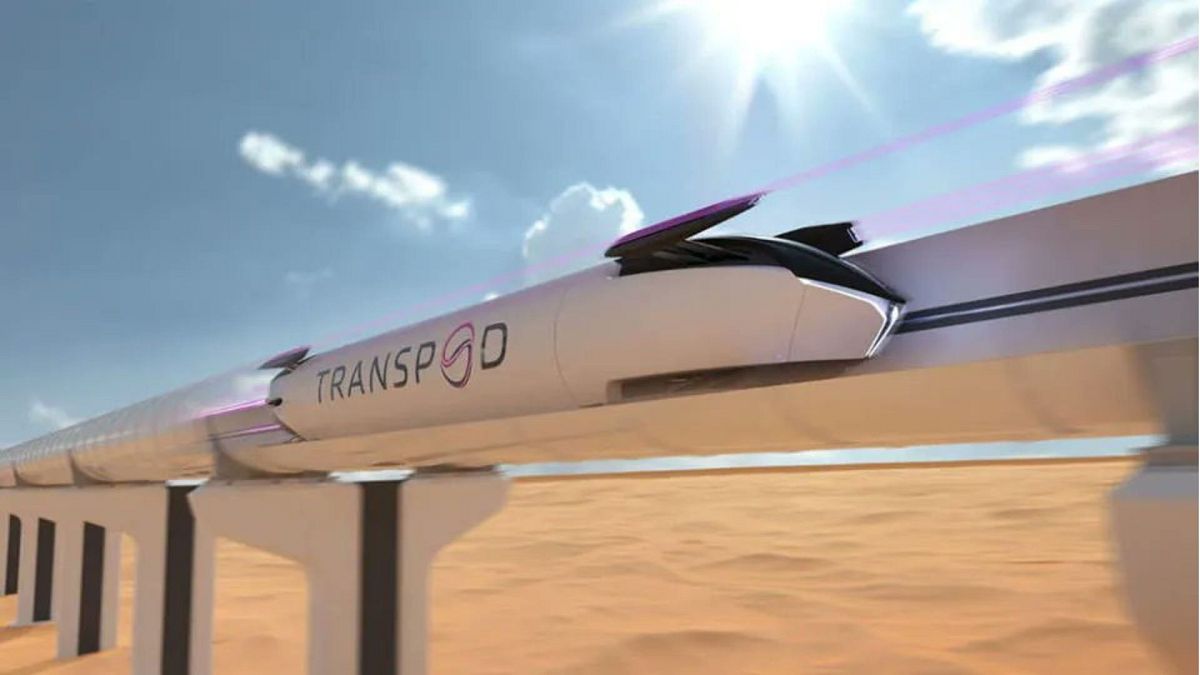The new ‘FluxJet’ looks like something out of a science fiction novel. Could it actually work?
All aboard - Canada could be getting a 1,000km per hour ‘vacuum tube’ train.
The dizzyingly fast ‘FluxJet’ proposal was unveiled last month by Canadian startup Transpod.
If the new design works, the levitating plane-train hybrid will be sucked along vacuum pipe guideways, linking far-flung cities in less than an hour.
Tickets will cost less than a plane fare, Transpod has promised.
It sounds too good to be true. So how does this dizzying new technology work - and is it actually feasible?
How would the FluxJet work?
The design is based on a new type of physics that the company describes as ‘veilance flux.’
It is similar to Elon Musk’s famous ‘hyperloop’ idea, where electric pods travel at great speed along low-pressure tubes.
The pods levitate, held up by magnets and a type of electric motor current.
The lack of aerodynamic drag means they can - hypothetically - accelerate extremely fast.
It sounds like something out of science fiction. Whether or not it will become a reality depends on the development of extremely new technology.
However, at the unveiling event, Transpod was able to demonstrate a scaled down prototype. The one-tonne train took off, travelled, and landed within a guideway.
“The technology is proven, and we have the confidence of investors, governments and partners to continue pushing forward to redefine transportation effectively,” TransPod CEO Sebastien Gendron said.
Investors have so far provided €550 million for the project.
Where would FluxJet operate and how much would it cost?
Canada currently has an inefficient and ageing railway system. None of its trains are high-speed, and just a tiny fraction of the network is electrified.
If it works, FluxJet would change all this. The company plans a network tube system across Canada, with stations in major cities.
Each tube will be able to shuttle 54 passengers and ten tonnes of cargo.
Tickets will cost 44 per cent less than a plane ticket, the company claims.
The project is currently in the research and development phase, and will next start looking to acquire land. The first planned leg will shuttle passengers between the cities of Calgary and Edmonton, a journey of around 300km. If it works, the train will cut a three hour drive down to a 45 minute train ride. The first phase would take a third of the traffic off the highway joining Calgary to Edmonton, the company claim - though it is not clear what they base this projection on.
However, the company is already looking much further afield.
"The first phase of construction consists of the connection of the Edmonton airport, which is planned to start at the end of 2023, and the full line connecting Calgary to Edmonton in 2027,” TransPod CEO Sebastien Gendron told CNN.
“Discussions are already happening in Texas to connect Dallas to San Antonio, in the UAE to connect Dubai to Abu Dhabi and in Australia to connect Sydney to Brisbane."



